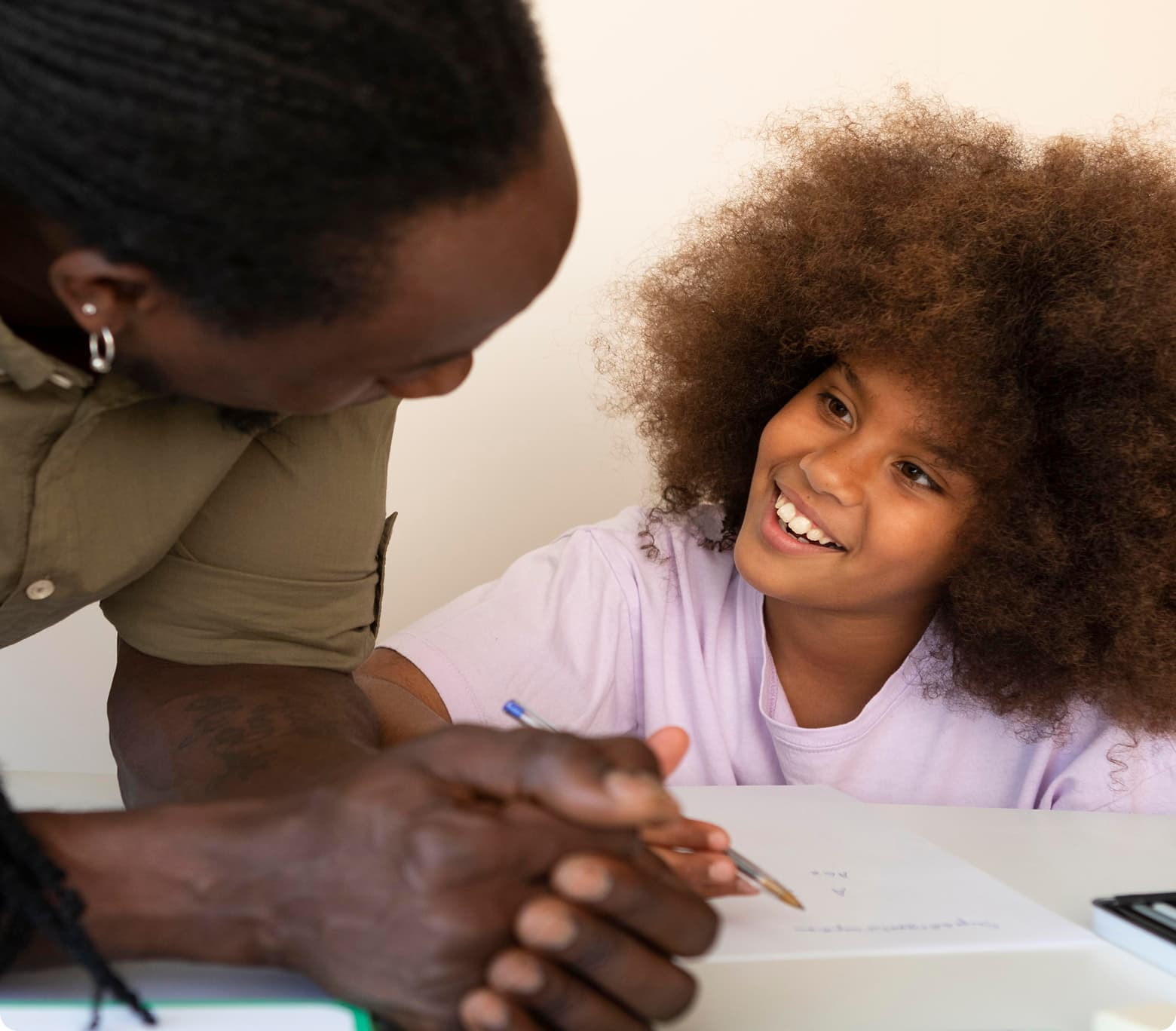General Therapy
You’re not the only parent worried their child’s sadness might be depression.

When is general therapy right?
These are some of the signals, behaviors, and emotions that we see the most from kids who benefit from therapy. If you’re seeing some of these difficulties (or others) at home, we can help you understand why and address them.

Persistent low mood, lack of motivation, withdrawal from typical activities, hopelessness, thoughts or comments about wanting to hurt themselves
Difficulty coping with reminders, flashbacks, and avoidance of the things/situations related to a traumatic event and/or difficulty adjusting to a change in their environment (e.g. a move, divorce, death of a loved one)
Physical symptoms without an identified medical cause
Trouble coping emotionally with a chronic condition or new onset illness
Sustained difficulties with everyday asks and tasks like potty training, eating a variety of foods, and getting good quality sleep
What to expect
General therapy sessions can be held in person and virtually. Kids up to age 18 (and parents) can benefit from understanding how to manage emotions and symptoms. Therapy for your child may include:

Evidence-based interventions and approaches including Cognitive Behavioral Therapy (CBT), Behavioral Activation (BA), and Trauma-Focused CBT (TF-CBT)
A combination of agreed-upon session types (child-focused and caregiver-focused without the child) that include learning about emotions and behaviors, skill building, barrier identification, measured progress, and homework plans for continuity between sessions
Between-session practice plans to support skills generalizing to real-life situations
Information gathering (with parent permission) from important adults in your child’s life, like teachers and other care providers, to ensure a well-rounded view of your child
Where appropriate, we can provide internal referrals to our psychiatry services (medication management) when a child needs more than therapy to progress towards goals, or if families want to try a combined approach from the beginning
Hear what Brightline parents have to say
“I went to the website, signed up, and had a parent/therapist consultation scheduled within days. That consultation went so well, and just a few days later we had an appointment set up for my daughter’s first therapy session. She was nervous, as she had never talked with a therapist or had a virtual visit of any kind. The therapist put her at ease, and afterwards my daughter said it went so well and that she really liked the therapist. My daughter feels the sessions are very helpful. I can see it too!”

General Therapy FAQs
Parents are often brought into care to address family dynamics that are impacting the ongoing symptoms or care of a child. Sometimes this looks like parent-only sessions and sometimes this looks like parents joining for a part of each session that the child is involved in. We are a family-centered practice — we know that when one child struggles with a mental health concern, it can have a ripple effect on everyone in the family.
It depends. Not all people (kids included) who experience a traumatic event go on to develop difficulties with coping emotionally or behaviorally. For those that do, Brightline follows evidence-based practice guidelines to offer kids and teens trauma-focused cognitive behavioral therapy (TF-CBT) to address symptoms related to the experience of a traumatic event.
Our clinicians are trained to provide evidence-based therapy to support your child, and our psychiatry services (e.g. medication consultations and management) can be layered onto care as needed. One of our relied-upon interventions for depression is cognitive behavioral therapy with a focus on behavioral activation.
Even though we talk about serious things, we want kids to have fun and be engaged while we do it. We are trained to bring play and a child’s interests into care while staying rooted in evidence-based interventions. For example, if a child is practicing talking to new people because of social anxiety, we might practice trick-or-treating, do a scavenger hunt, or play a game of “guess who” with other staff members in the office.
At Brightline, parents are closely involved in their child’s care. Why? Because it’s central to the way we work (and it’s a core part of the evidence-based care we rely on). This is true both for younger kids and for teenagers. Your involvement might look different depending on your child’s age, developmental ability, and program. We’ll keep the discussion of how/why/why ongoing.
For very young children, parents are a huge part of their child’s care. The parent is the one with the fully developed brain — which means you’re also the one with the hindsight, insight, and foresight to integrate what we do in our sessions into the daily life of your young child. The way we train parents empowers them to use the skills that help with all the tiny, day-to-day interventions. This is so much more effective than having a clinician work with a child one-on-one for an hour a week and then just sending them home. During parent training sessions, sometimes kids are present, sometimes not. For example, if you're here because your child is experiencing separation anxiety, we might practice independence or separating from you, the parent, as part of their treatment.
For kids in this middle age group, parents should expect to be involved in every session. In some situations, they might even be more involved than their child. For others, parents will need to check in at the beginning or the end of the sessions. And in some cases, the involvement might be more evenly split or include more shared time. The specifics have a lot to do with why you're coming to care and the care plan you co-design with your clinician.
Even with teenagers, parents should still expect to be heavily involved. If they aren’t part of every session, it’s likely they’ll be part of every other. Typically, this looks like parents checking in at the beginning or the end of the session.
When we say parents are checking in, we don’t mean that we're telling you everything your child said or did when you weren’t there. (People would stop coming to us for care!) Instead, during the check-in time with parents, we’re relying on you for updates about how things have gone over the past week. We’ll ask you what changes you see, about the current symptoms or issues, and your point of view on how skills practice has been going. We’ll also fill you in on any new goals or skills that the child is expected to practice in the upcoming week; the more you know what your child is working on, the more you can support — and not accidentally work against the plan. Lastly, these check-ins are also for you to receive the guidance you need. We know kids don’t come with instructions, so a big part of our job is to teach you the skills you need to rely on during all those hours between sessions.
As evidence-based care devotees, we champion lifelong learning and continuing education. Our training director builds learning programs based on the latest research for our team. We hold weekly team meetings and consultation groups (including one-on-one meetings with managers) during which we discuss our clinical approach. Performance evaluations and quality oversight are both closely aligned with our evidence-based practice approach. Lastly, we invest in learning! Our teams receive professional development funds to make it easier for them to keep learning.
Get in touch with us
It's okay if you don't know the root of the issue or are unsure what to say. We've been there — and now we're here for you.
